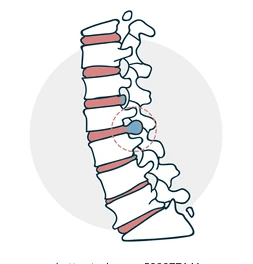What Causes It?
Age-related disc degeneration - As we age, discs lose water content and become less flexible, making them more prone to tearing or rupturing with even minor strain.
Improper lifting technique - Using back muscles instead of leg muscles to lift heavy objects puts excessive strain on spinal discs.
Excess body weight - Additional weight puts increased pressure on discs, particularly in the lower back.
Repetitive activities - Jobs or hobbies that involve repetitive lifting, pulling, pushing, bending sideways, or twisting can increase risk.
Sedentary lifestyle - Lack of regular exercise can lead to weaker muscles supporting the spine, increasing vulnerability to disc herniation.
Smoking - Reduces oxygen supply to discs, accelerating degeneration.
Genetics - Family history of disc problems may predispose some individuals to herniation.
Traumatic injury - Sudden, forceful impact such as from a fall or car accident can cause disc herniation.
Occupational hazards - Jobs requiring heavy physical labor, constant sitting, or driving for long periods increase risk.
Gender - Herniated discs are more common in men than women, though the gap narrows with age.
Improper posture - Chronic poor posture places abnormal stress on spinal discs.
Signs & Symptoms
Arm or leg pain - Depending on the location of the herniated disc. Lumbar disc herniation typically causes pain in the buttocks, thigh, calf, and possibly foot, while cervical disc herniation usually affects the shoulder and arm.
Radiating pain - Often described as sharp, burning, or shooting, that travels along the path of the affected nerve (radicular pain).
Numbness or tingling - In the body part served by the affected nerves.
Muscle weakness - Making it difficult to lift or hold items, or causing you to stumble or affect your gait.
Pain that worsens with certain movements - Such as sitting, standing, walking, bending, coughing, or sneezing.
Pain that improves with certain positions - Many find relief when lying down or in specific positions that reduce pressure on the affected nerve.
Sciatica - A specific type of pain that follows the path of the sciatic nerve from the lower back through the buttocks and down the leg, often associated with lumbar disc herniation.
Loss of bladder or bowel control - A rare but serious symptom that requires immediate medical attention as it may indicate cauda equina syndrome, a medical emergency.
Note: Some people with herniated discs experience no symptoms, particularly if the herniation doesn't press on a nerve.
